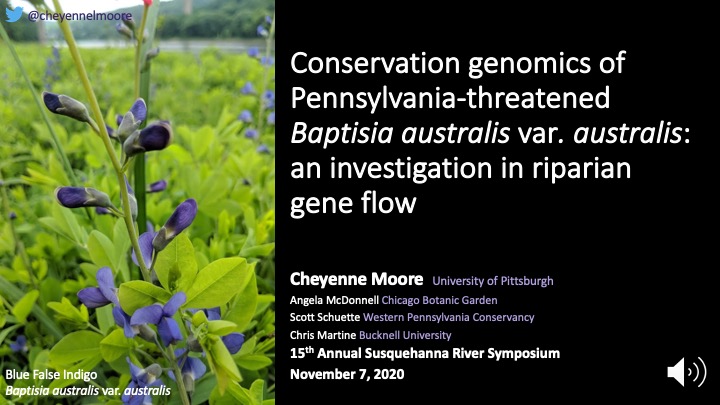Author:
Cheyenne Moore
Co-Authors:
Angela McDonnell
Scott Schuette
Christopher Martine
Institution:
University of Pittsburgh
Abstract
The perennial wildflower, Baptisia australis var. australis (L.) R. Br. is found along only four waterways in Pennsylvania: the Allegheny River, Youghiogheny River, Clarion River, and Red Bank Creek. Because of its limited distribution and small number of extant populations, B. australis var. australis is considered state-threatened in Pennsylvania. In addition, the riparian prairie habitat that Pennsylvania Baptisia australis var. australis is restricted to is also in decline and considered vulnerable in the state. Because of conservation concerns for Baptisia australis var. australis in Pennsylvania, gaining insights into the natural history and genetics of the taxon is useful for conservation practitioners. This project seeks to determine the genetic structure and health of known native populations and apply that information to understanding riparian gene flow, as well as establishing conservation units. Genotyping-by-sequencing (GBS) was used to collect genomic data for use in population genetics analyses. My work synthesizes these data to gain insight into the metapopulation dynamics of this riparian system and examine patterns of gene flow. We found that there are three genetic groups of Baptisia australis var. australis in Pennsylvania, with one of these showing internal genetic structure. This finding can be applied to management units for the taxon. Some Pennsylvania populations are becoming increasingly isolated as well as dwindling in population size, making now an ideal time to collect seeds and facilitate gene flow while levels of inbreeding are relatively low. My research will inform the conservation status of Baptisia australis var. australis in Pennsylvania, as well as clarify lingering uncertainties about gene flow in riparian plant populations.
